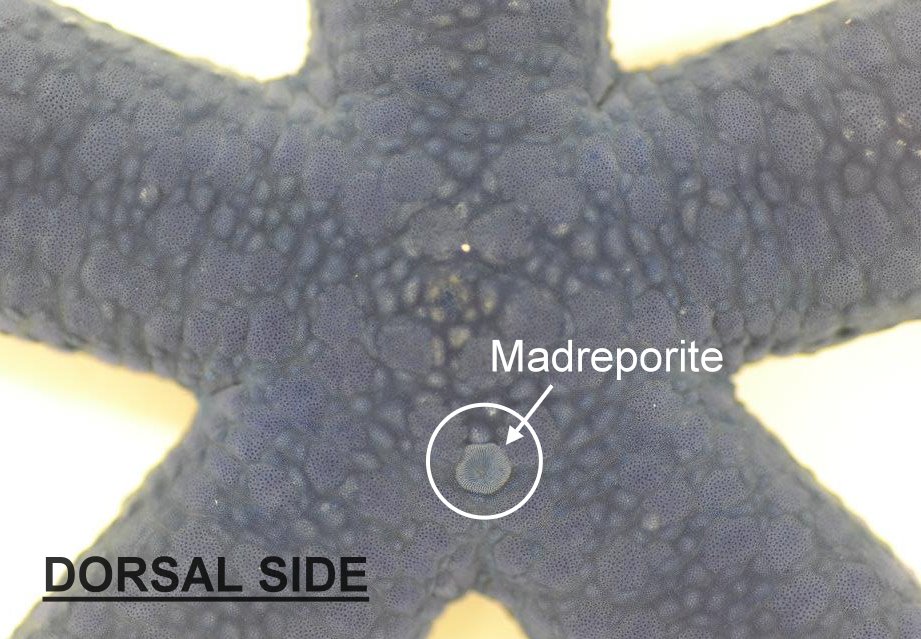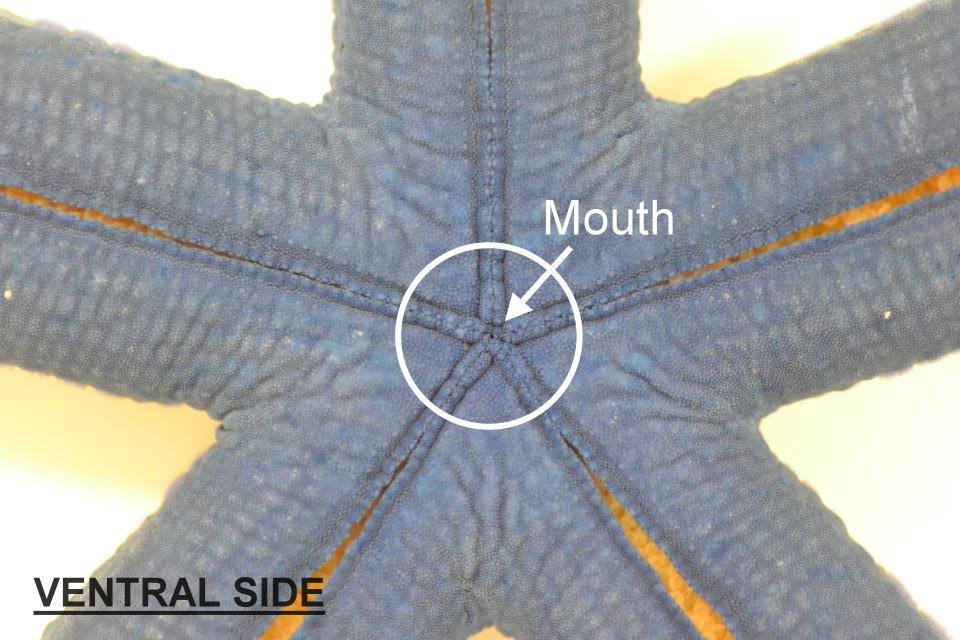Adults of L. laevigata are pentamerous radial symmetrical and
normally possess five arms (some can have 4-7 arms and maintain radial
symmetrical) (Lawrence 1987; Williams 2000). Arms are typically roundly
tipped and are not distinct from the central disc. While the anus is not easily recognizable in this species, an asymmetrical spot named madreporite is clearly seen on
the dorsal (upper), aboral side of the animal.
|
 |
 |
Underneath each arm, there is a groove with yellow tubular projections
called tube feet. The mouth is situated in the center of the ventral
(bottom), oral side of the animal.
|
Individuals found on the Great Barrier Reef are always royal blue in color (Williams 2000). Populations in other regions, however, can occur in other colors such as apricot, pink, gray and purple etc. (Williams and Benzie 1998).